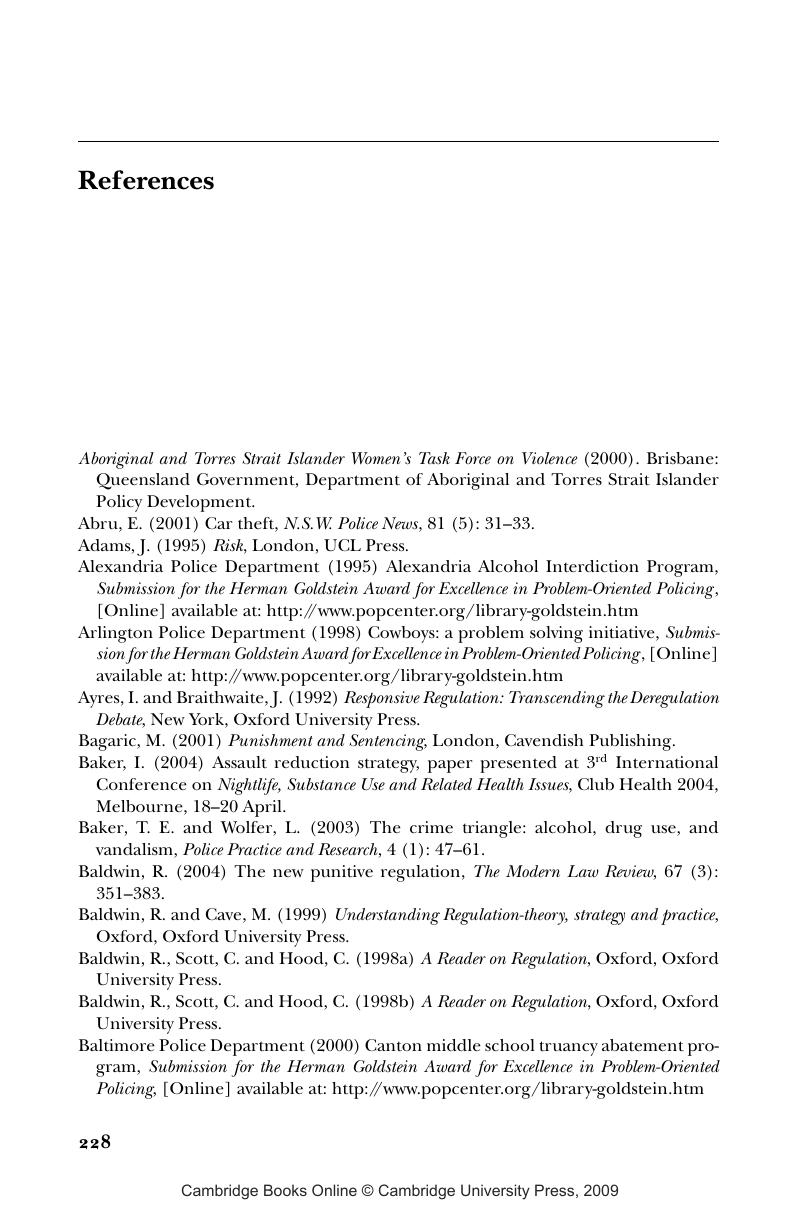Book contents
- Frontmatter
- Contents
- List of tables
- Acknowledgments
- 1 Governance, risk and crime control
- 2 Policing and the new regulatory state
- 3 Dimensions of third party policing
- 4 In the shadow of the law
- 5 Controlling drug problems
- 6 Controlling crime problems
- 7 Equity, side effects and accountability
- 8 Directions for the future
- Notes
- References
- Index
- References
References
Published online by Cambridge University Press: 22 September 2009
- Frontmatter
- Contents
- List of tables
- Acknowledgments
- 1 Governance, risk and crime control
- 2 Policing and the new regulatory state
- 3 Dimensions of third party policing
- 4 In the shadow of the law
- 5 Controlling drug problems
- 6 Controlling crime problems
- 7 Equity, side effects and accountability
- 8 Directions for the future
- Notes
- References
- Index
- References
Summary

- Type
- Chapter
- Information
- Third Party Policing , pp. 228 - 249Publisher: Cambridge University PressPrint publication year: 2006

